The Egyptian religion is one of the central pillars of Ancient Egyptian culture. It was deeply ingrained in the daily life of its people, from the lowest to the highest echelons, as evidenced by every pharaoh. Therefore, when you join us on a tour of the most important monuments and archaeological sites of that era, you’ll be immersed in a universe of beliefs that is vastly different from our present-day reality. This is precisely one of the main draws of visiting Egypt, and to help you appreciate it better, we’ll highlight the key elements you should be aware of beforehand.
First of all, it is important to note that, although we use the generic term “Egyptian religion,” it cannot be said that there was a single set of beliefs. It was not homogeneous either among the different regions or throughout all the historical periods that made up the more than 3,000 years of Egyptian civilization. On the contrary, there were significant variations among them, leaving ample room for the veneration of local deities.
This latter point highlights another key characteristic of Egyptian religion: its polytheism. While many current religions are monotheistic, such as the majority and official religion of modern Egypt (Islam) or the minority religion in the country (Coptic Christianity), in ancient Egyptian religion, there was a pantheon made up of numerous deities. Each of them was the protector of different elements of nature or daily life. Some of these gods could have the status of supreme god or even creator god, a rank that varied depending on the historical period or region in question.
This enormous variety of deities among different periods and regions led to another characteristic of Egyptian religion: syncretism. That is, the assimilation of some deities with others, sometimes resulting in new gods that mixed attributes of both.
The ways in which believers represented the gods of Egyptian religion are also very striking. They usually did so in the form of an animal, a human form, or a mixture of both, generally with a human body and an animal head or other specific features such as wings and horns. This resulted in creations full of imagination and visual impact that still move those who contemplate them today.
But Egyptian religion was not a mere factory of gods with improbable appearances designed to impress its believers. On the contrary, its set of dogmas was truly complex, and its deities were the perfect vehicle to explain the origin of the universe, to guide the lives of believers, and to promote their eternal life in the afterlife.
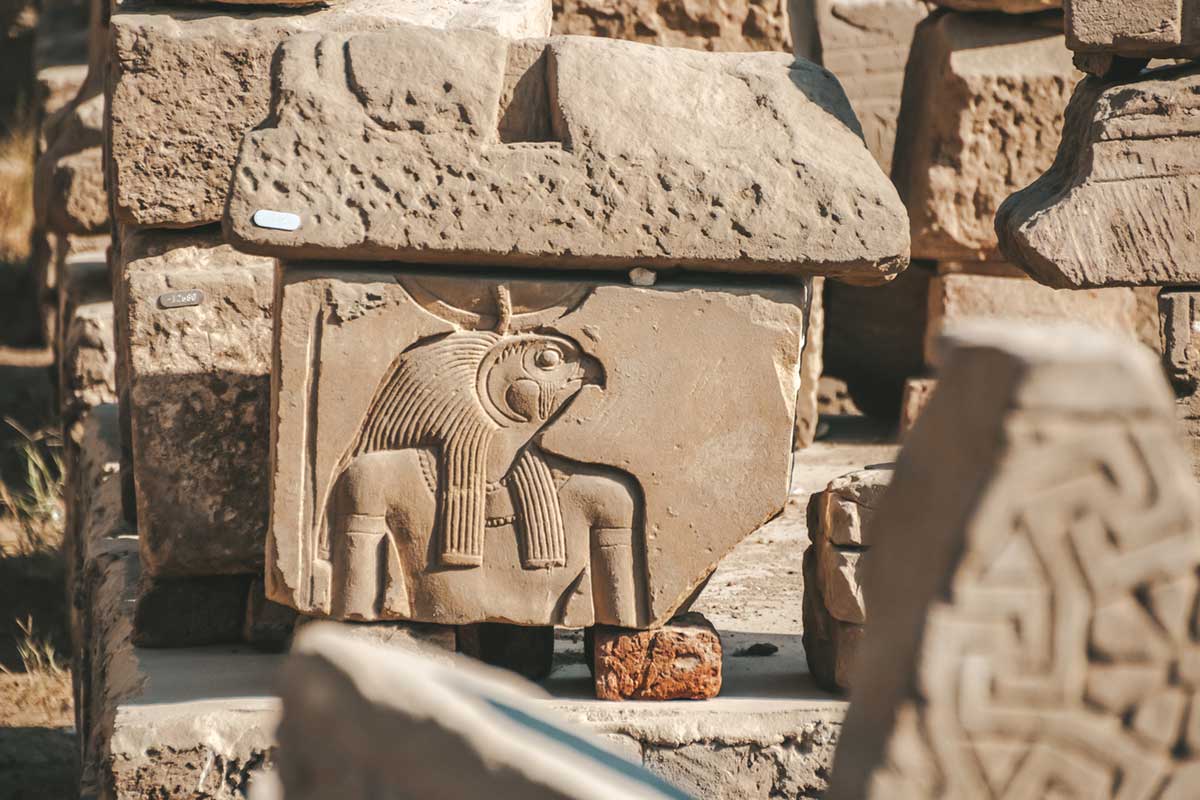
As we were saying, one of the great pillars of the Egyptian religion was the explanation of the origin of the universe (cosmogony). In this aspect, there was no homogeneity either, since at least three cosmogonies are identified: those discovered in the sanctuaries of Heliopolis, Hermopolis, and Memphis. However, they had several aspects in common: the belief that life originated from the waters of Chaos (or Primordial Ocean), that the first terrestrial formation was a primordial hill, and that the gods participated in that miracle. These are, in summary, their respective theories:
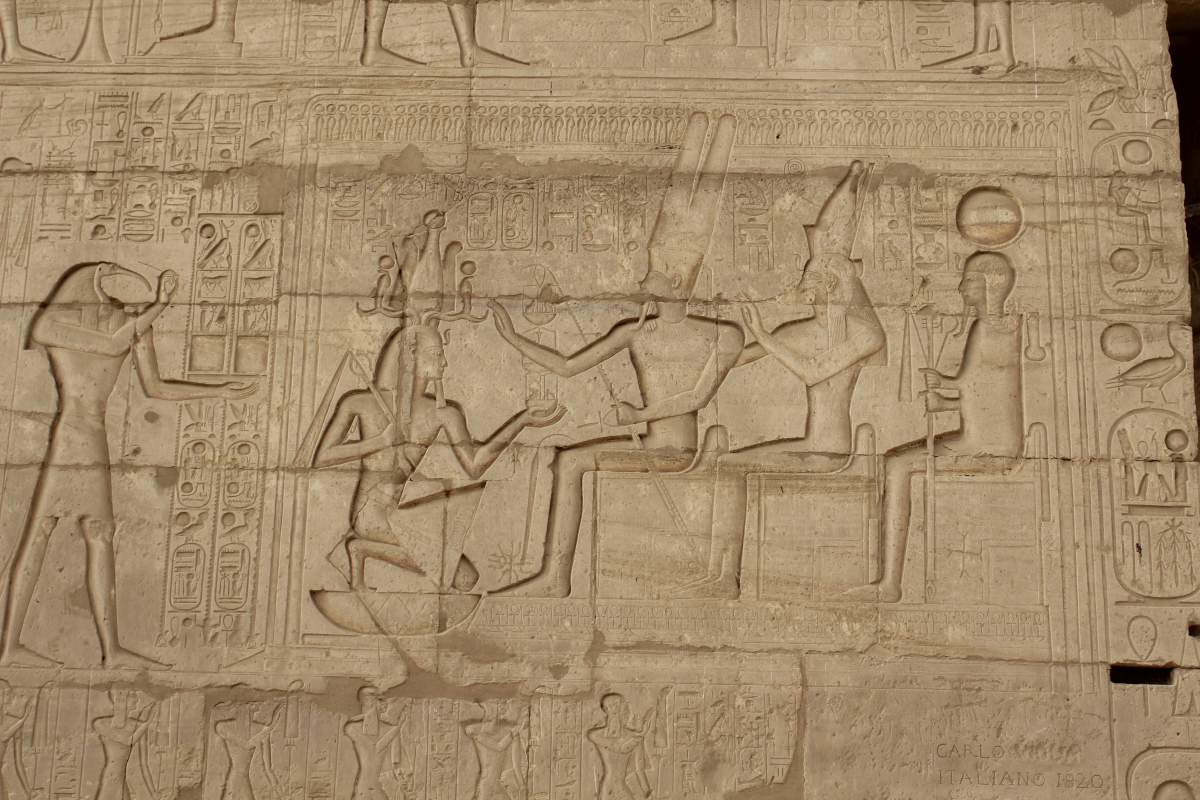
Similar to cosmogonies, triads are groups of three gods consisting of a father god, a mother goddess, and a son, emphasizing the idea of birth and genesis of life, which is recurrent in Egyptian religion. By the way, this idea could have influenced the concept of the Holy Trinity in Christianity, according to some authors.
Triads had great significance throughout the history of Egyptian civilization, including the Greco-Roman period, during which mammisi (small temples dedicated to divine birth located near or within larger ones) were constructed. The following are the most important triads in Egyptian religion:
If cosmogonies explained, in one way or another, the origin of the universe, the gods that emerged from that origin guided and protected the lives of their believers during earthly existence. They were very present in the day-to-day lives of ancient Egyptians through rituals, offerings, and other acts of veneration. Each one occupied a specific place in maat or divine order, with specific functions for maintaining general harmony and the ability to influence natural events and human lives.
It is important to note that the gods we will see below were not independent, but interacted with each other, giving rise to events and legends to explain their roles and natural phenomena. All of this gave rise to the mythology of Egyptian religion, which was of great richness and has been reconstructed thanks to funerary texts, devotional hymns recited by the faithful, and writings by Greeks and Romans who came into direct contact with Egyptian civilization.
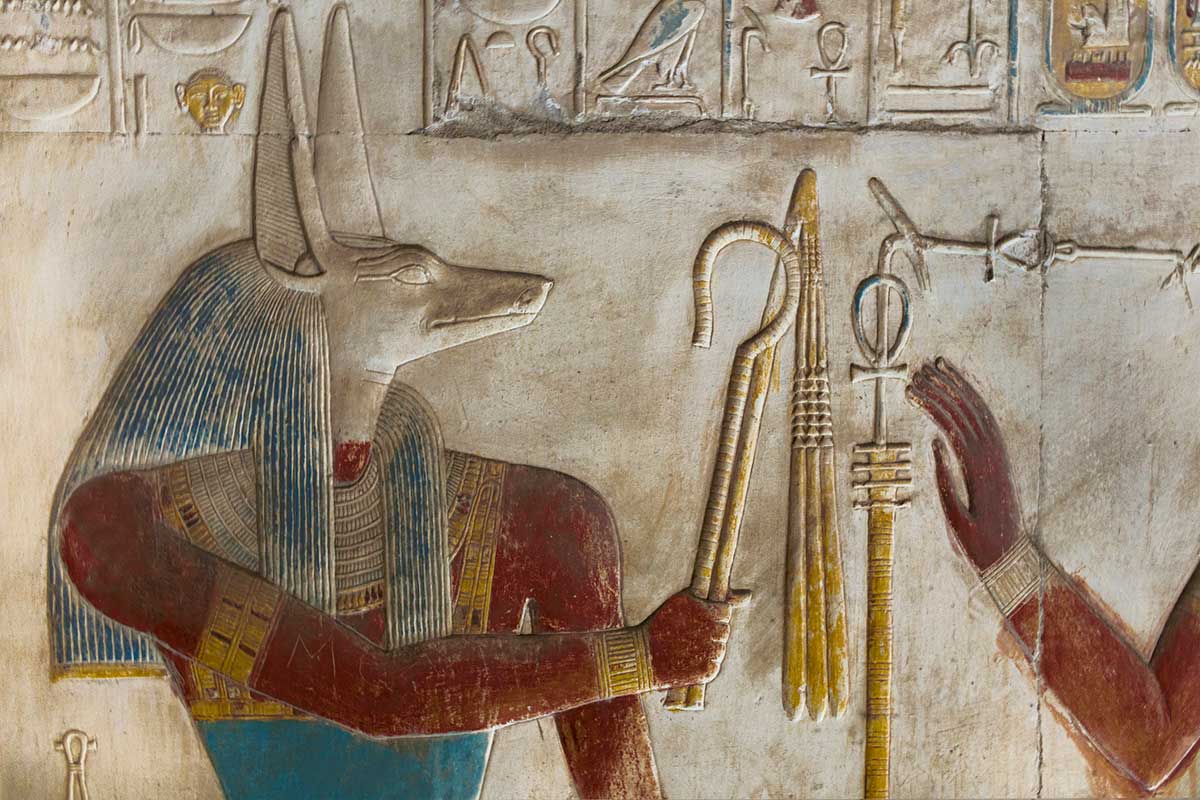
Below we list alphabetically the main divinities of the Egyptian religion. However, the complete list of the pantheon of gods is very extensive, with a number that varies depending on the assimilations that are accepted. For example, only in the Judgment of Osiris can we count more than 40 participating gods, which is a key myth of the Egyptian religion and which we explain at the end of the page.
Often they present different interpretations depending on the region or historical period, or even assimilations as a result of the aforementioned syncretism. Therefore, we also mention the most important variations within each case.
In addition to all the enumerated gods, in Egyptian religion there were other supernatural characters that were important for giving meaning to the myths. For example, Ammut, who was responsible for devouring the hearts of the deceased who had not been pure in their lives, was represented in a body that combined the lion, crocodile, and hippopotamus.
Special mention should also be made of the sphinxes, mythological beings indissolubly linked to Egyptian religion (although there are also other versions in ancient cultures). In this case, they were creatures formed by a lion’s body with a human head, often identified with that of the pharaoh. But within the sphinx archetype, there are variations, as from the Middle Kingdom, the mane and ears were also lion-like, leaving only the pharaoh’s face. In any case, their magical function was the protection of temples or sacred places, with the most famous being the Great Sphinx of Giza, next to the famous Pyramids, which could represent the pharaoh Kefren.
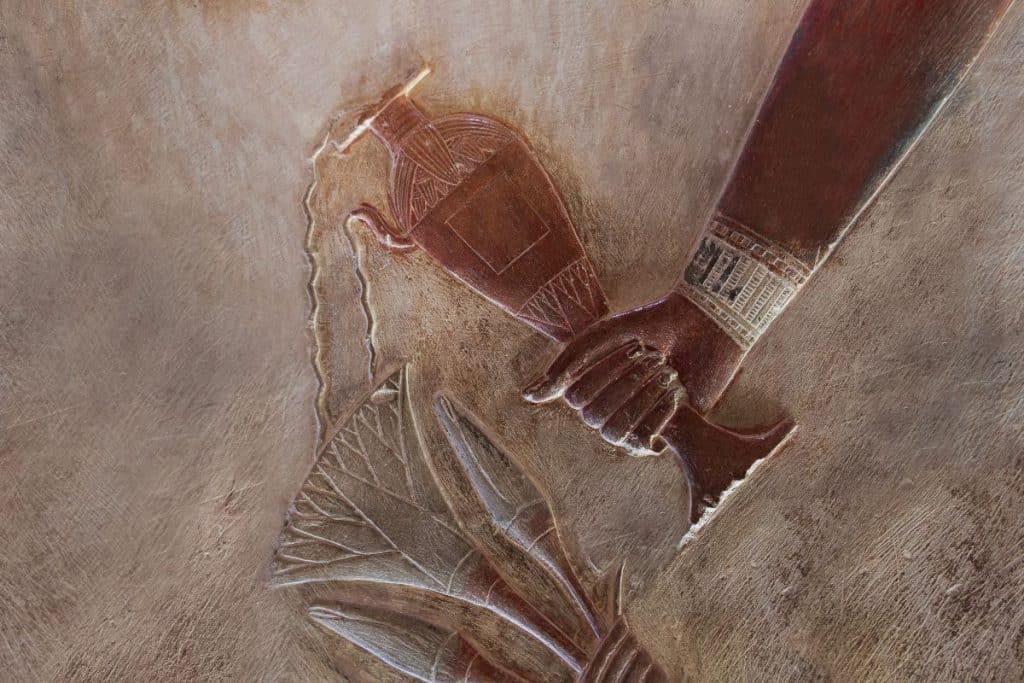
As we have seen, there are several symbols that are prevalent in Egyptian religion and are worth examining. You will often come across these symbols in temples or in the Books of the Dead exhibited in museums, which we will explain below.
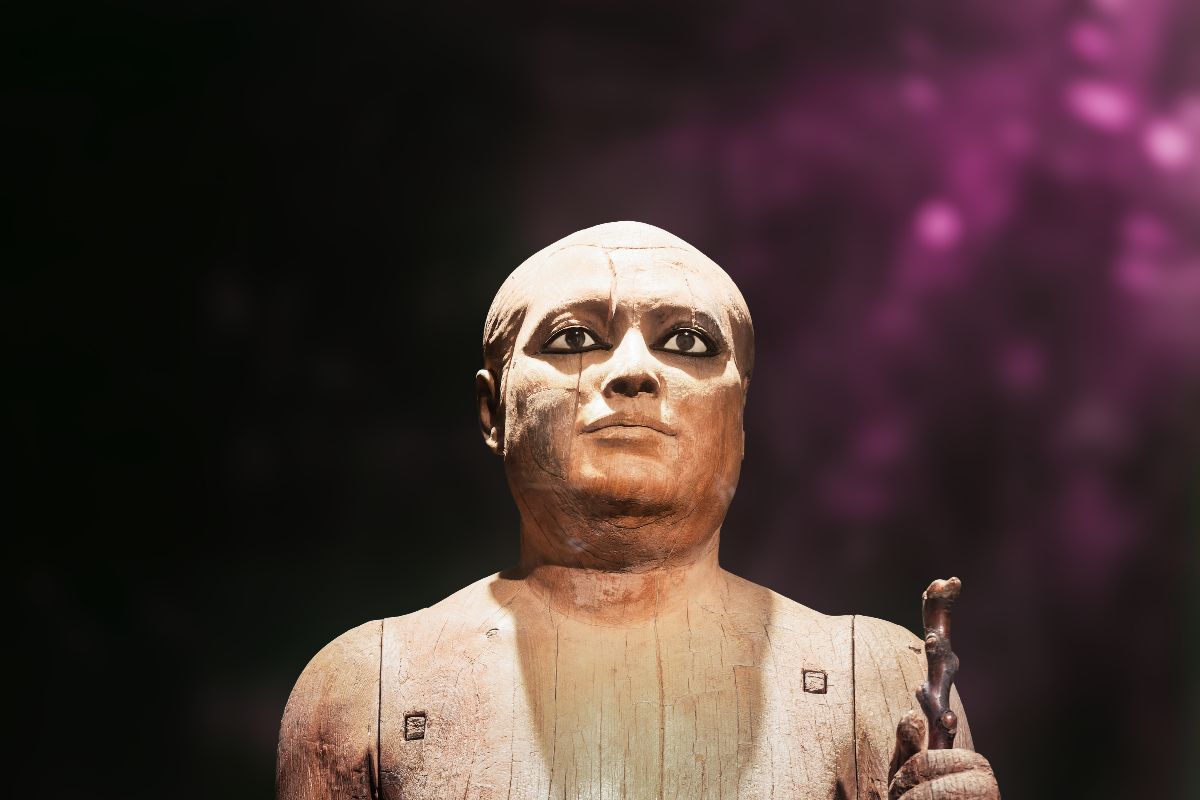
The temple was a common element in all of Egyptian religion. It was the center of society, and the heart of every settlement, from large cities to small villages. The temple served not only religious purposes but also administrative, medical, and educational functions. Other sacred places in later religions, such as Christian cathedrals or Muslim mosques, also had similar social roles.
However, there was a significant difference between Egyptian temples and those of other religions, such as those mentioned. In Egyptian temples, the faithful did not gather inside; instead, it was a space only accessible to pharaohs or priests, who acted as intermediaries between the gods and the people. The faithful could only enter the hypostyle halls or open peristyles. For a more technical and artistic explanation of Egyptian temple architecture, please visit the page dedicated to architecture in Ancient Egypt.
Therefore, the clergy held a crucial position in Egyptian civilization. Among other things, their duty was to honor the deity who served as the patron of the temple daily, with offerings to the deity’s image, located in the inner sanctuary. Typically, this was a statue that, according to Egyptian religious belief, housed the ba or soul of the god.
These priests were part of a highly hierarchical body, with assistants to complete all tasks, and there was a place for women as well. In addition, positions were hereditary, passed down from fathers to sons, maintaining great secrecy in their practices and knowledge. Some of these priests specialized in different functions, such as those responsible for funeral rites or observing the stars for making certain decisions.
Related to this are the oracles, which had a significant presence in Egyptian religion, especially from the New Kingdom onwards. It was also the priests who were responsible for asking the deity about all kinds of issues, from matters of government to more mundane doubts. They interpreted signals such as the movements of a boat as answers. These intercessions were usually performed in the temple, but there were also sacred enclosures dedicated specifically to this task. The most famous of these was the Oracle of Amun at Siwa, which was even consulted by Alexander the Great.
Some of these consultations were carried out in large rituals and official festivities, although these events could have many other objectives, such as the celebration of the ascension to the throne of a new pharaoh. Some of these festivities were really massive, such as the Opet festival, which took place in the temple of Karnak, where the gods Amun-Ra, Mut and Khonsu (the Theban triad) were carried in procession on a boat. On the other hand, the daily and morning rituals were carried out in a much more intimate manner and only by priests and assistants.
The religion of ancient Egypt went beyond explaining the “before” and “during” phases of existence and also addressed the “after” phase of earthly life. Death was seen as a natural part of the cyclical nature of existence, marking the transition from the earthly realm to the afterlife. According to this belief, at death the physical body separated from the immaterial components of the individual’s personality, namely the ba or soul and the ka or vital energy.
Although these components dispersed throughout the universe, they could regenerate indefinitely, as long as a crucial requirement was met: the corporeal remains of the deceased (i.e. the body) had to remain intact.
Hence, the practice of mummification, which is one of the distinctive features of ancient Egyptian religion. Some scholars refer to it as a “magic curtain” that enables access to eternal life and that extends to the sarcophagus itself. However, the ritual also involved other elements, such as the careful preparation of the body through desiccation, removal of organs, and embalming, among other procedures.
Funerary objects were also deposited in the tombs of the deceased. Some were believed to be needed by the individual in the afterlife, while others served as protective amulets. The wealth and status of the individual were reflected in the richness of their funerary belongings.
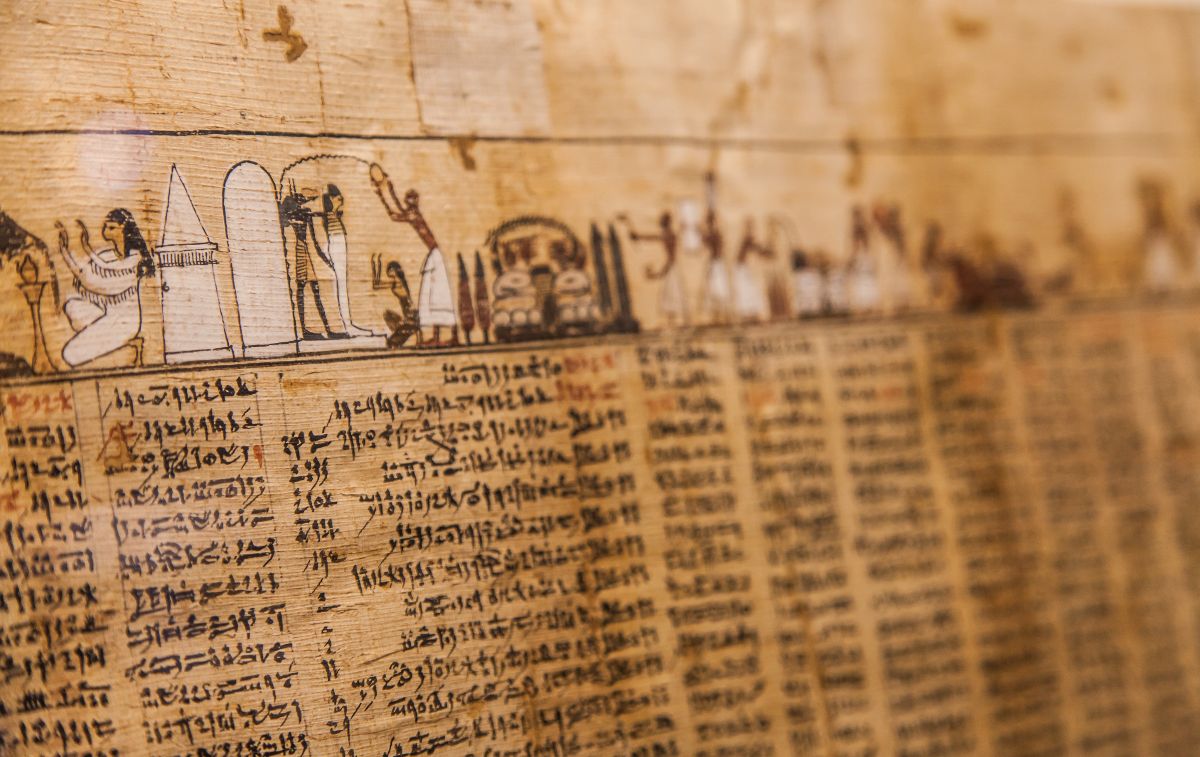
One of the most fascinating religious, literary, and artistic expressions of Ancient Egypt is the Book of the Dead. This papyrus text, richly decorated with images, aimed to help the deceased achieve eternal life, which was enjoyed in the fields of Aaru (the Egyptian version of paradise).
Its origin can be traced back to the texts written on the walls of pyramids and sarcophagi, as early as the Old Kingdom in the third millennium BCE. It consists of spells that guide, warn, and protect the deceased from dark forces, present them to the gods, and perform many other tasks. For a more detailed explanation of its structure and style, you can visit the page devoted to Egyptian writing.
The Book of the Dead is closely related, therefore, to the Judgment of Osiris, one of the most important myths in Egyptian religion. It determined who achieved eternal life and who had to face their “second” and final death (being devoured by Ammit).
This was done by direct weighing on a balance. On one tray was placed a feather of Maat (the goddess of truth and justice), and on the other was the heart of the deceased, which had been extracted by the god Anubis. At that moment, a jury of gods asked the deceased questions about their earthly behavior, and based on their answers, the heart would enlarge or shrink, increasing or decreasing in weight. Only if, at the end of the interrogation, the heart was lighter than the feather of Maat, could the deceased’s immaterial components (ka and ba) unite with the mummy and access the fields of Aaru.
Fill out the form below to receive a free, no-obligation, tailor-made quote from an agency specialized in Egypt.
Travel agency and DMC specializing in private and tailor-made trips to Egypt.
Mandala Tours, S.L, NIF: B51037471
License: C.I.AN-187782-3